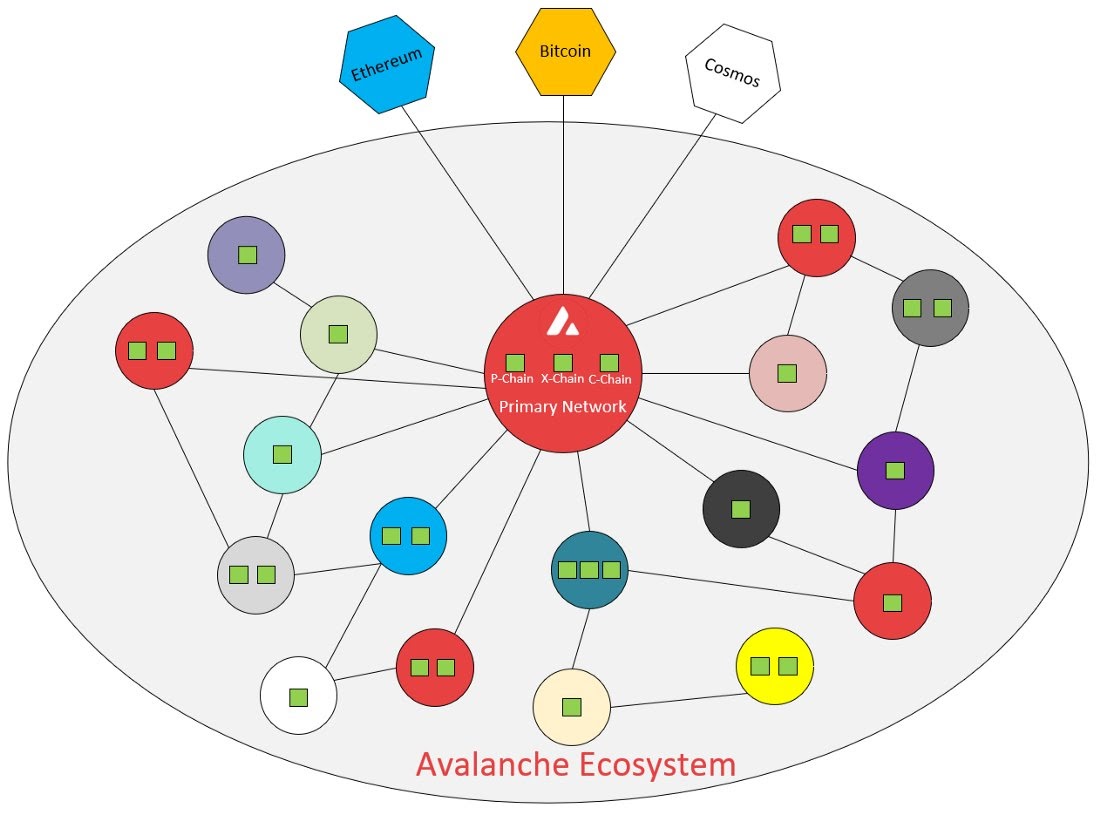Avalanche is a decentralized network protocol that allows for the creation of subnets, each with their own unique consensus mechanism and governance structure. This enables a wide range of use cases and applications to be built on top of Avalanche, from DeFi and NFTs to gaming and prediction markets.
One of the key benefits of Avalanche is its ability to handle high throughput and low latency transactions, making it well-suited for high-frequency trading and other performance-sensitive applications. Additionally, Avalanche’s subnet architecture allows for multiple subnets to operate in parallel, enabling a high degree of scalability and flexibility.
One potential use case for Avalanche subnets is in the DeFi space. Avalanche’s high throughput and low latency capabilities make it well-suited for building decentralized exchanges (DEXs) and other DeFi platforms. Additionally, the ability to create multiple subnets allows for the creation of different DeFi markets, each with their own unique token economics and governance structures.
Another potential use case for Avalanche subnets is in the gaming industry. Avalanche’s subnet architecture allows for the creation of gaming subnets, each with their own unique consensus mechanism and token economics. This can enable the development of decentralized gaming platforms, where players can own and trade in-game assets in a trustless, decentralized environment.
In the NFT space, Avalanche’s subnet architecture allows for the creation of NFT subnets, each with their own unique consensus mechanism and token economics. This can enable the development of decentralized NFT marketplaces, where creators can mint and sell their own NFTs without the need for centralized intermediaries.
The prediction market is also a promising application area for Avalanche subnets. Avalanche’s high throughput and low latency capabilities make it well-suited for building decentralized prediction markets. Additionally, the ability to create multiple subnets allows for the creation of different prediction markets, each with their own unique token economics and governance structures.
Overall, the Avalanche subnet architecture has the potential to enable the development of a wide range of decentralized applications and use cases. Its high throughput, low latency, and scalability capabilities make it well-suited for a variety of industries, including DeFi, gaming, NFTs and prediction market. As the technology and ecosystem continue to evolve and mature, we can expect to see more and more innovative use cases and applications built on Avalanche subnets in the future.
Avalanche subnets are gaining increased attention as a new way to approach consensus in the blockchain industry. By leveraging distributed, fault-tolerant networks of computers, avalance subnets can provide better security and scalability for blockchains. Moreover, these networks offer the capability to scale much more quickly than traditional consensus methods such as proof-of-work and proof-of-stake. This makes avalance subnets a promising technology for blockchain applications that require high throughput and low latency.
Avalanche subnets are also attractive because they can be used to reach finality much faster than traditional consensus algorithms. Since avalance subnets use distributed, fault tolerant networks of computers they can quickly detect and agree on the valid state of a transaction. This makes avalance subnets ideal for applications that require fast finality such as DeFi and payments.
In addition, avalance subnets provide better security than traditional consensus algorithms. By utilizing distributed fault tolerance, avalance networks are much more resilient to malicious attacks. This makes avalance subnets a preferred choice for applications such as enterprise blockchain networks, where the risk of malicious attacks is higher.
The potential of avalance subnets in the blockchain industry is immense and developers are only beginning to scratch the surface. With further research and development, avalance subnets could become an integral part of blockchain infrastructure and revolutionize the way we approach consensus in the blockchain industry.
By leveraging distributed, fault-tolerant networks of computers, avalance subnets can provide better security and scalability for blockchains. Moreover, these networks offer the capability to scale much more quickly than traditional consensus methods such as proof-of-work and proof-of-stake. This makes avalance subnets a promising technology for blockchain applications that require high throughput and low latency. In addition, avalance subnets provide better security than traditional consensus algorithms since they are much more resilient to malicious attacks.
The potential of avalance subnets in the blockchain industry is immense and developers are just beginning to explore its capabilities. With further development, avalance subnets could transform the way we approach consensus in the blockchain industry and make it a more secure, efficient, and scalable process. Furthermore, avalance subnets could be used to reach finality much faster than traditional consensus algorithms, thus making them ideal for applications that require fast finality such as DeFi and payments.

